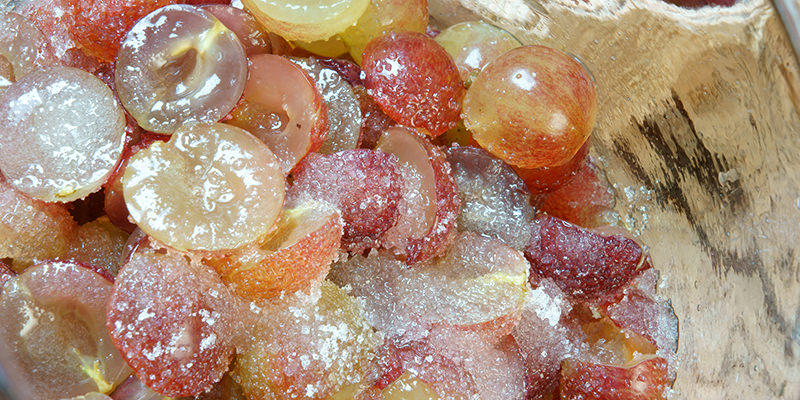Among the sophisticated wine terms we know, and are thus no longer intimidated by are words like cremant, lees, malolactic fermentation, white wine “farts” (OK, that one we’re still a bit intimidated by). We figure we must be close to the end of the freaky wine terms list by now, right? Alas, far from it. Witness: chaptalization, aka “enrichment,” aka “amelioration,” aka “Verbessurung” (and yes, that scariest sounding term is German). Lots of words and letters, but they all refer to the same process—a pretty significant process which most of us had no clue existed.
That process—we’ll stick with calling it chaptalization—involves adding sugar to grape juice before or during fermentation. And it’s far more common than you’d think. After all, wine is all about terroir, right? The intimate interaction between vine and soil, the delicate dance between a vintner, his land, and the fickle climate? Not quite.
In fact there are far more…interruptions…between vine, winemaker, and bottle than most of us know, and chaptalization is one of the bigger ones. Named after Jean-Antoine Chaptal (not the inventor but Napoleon’s minister of the interior, the guy who gave it the green light in France), chaptalization has played a significant role in the success of many wine regions throughout history. And while the process involves adding sugar, the goal isn’t to create a sweeter wine, but a stronger one. (Compare that with dosage, where sugar might actually sweeten the finished Champagne.) Fermentation occurs when yeast gets to chow down on a carbohydrate source – sugar – and metabolize it into alcohol. Increase the carbohydrate source and you should get more alcohol.
As a process, chaptalization has been historically the most important in colder climates, where grapes ripen slower and thus develop insufficient (or undesirably lower) amounts of sugar. Over centuries—possibly even dating back to Roman times—winemakers were able to goose fermentation by adding a bit of sugar, the best method for ensuring sufficient alcohol develops in the end product.
Bear in mind, that “best method” is considered the worst in many places in the world. Chaptalization is actually outlawed in several regions (including California, Argentina, and South Africa), and regulated elsewhere, and not just because it seems distinctly distasteful or aggressive to winemakers. The argument can be made that it gives an unfair advantage to the winemakers who use it, allowing them to manipulate the end product more aggressively than winemakers in warmer regions who have to chance the climate to achieve desirable grape-sugar levels.
Again, regions where chaptalization tends to be legal are colder, as grapes in those regions tend to have a harder time ripening and developing sugars, which is why chaptalization is actually legal in certain parts of France, Germany, Austria, and elsewhere in Northern Europe, as well as winemaking regions in Oregon and the upper Midwest in the United States. According to wine expert Jim Clarke, “in the coolest, most northerly winegrowing regions of Europe, producers can use sugar to add up to 3.5 percent of alcohol to their wines.”
It isn’t just a matter of turning up the dial on the alcohol content, although that’s part of it. According to Murli Dharmadhikari, direct of the Midwest Grape & Wine Industry Institute at Iowa State, “when grapes are harvested, people are usually looking for about 20 to 22 percent sugar content” in the juice. At a 20% juice sugar level, you’d get “a wine with an alcohol level of about 11 percent.” Appropriate for lighter whites but on the ultra-low end of the spectrum for reds, including hometown heroes like Oregon Pinot Noir.
No surprise, there’s plenty of controversy surrounding chaptalization, from the EU actually trying (and failing) to outlaw it and wine writers arguing about the merits of allowing major producer states like California to legally chaptalize.
But don’t freak out about chaptalization—there are far crazier things going on in the world of wine. And chances are, you’ve already had plenty of chaptalized wine and lived to tell the tale. The only thing to freak out about is which term to use when you share your new wine savvy with your friends.

